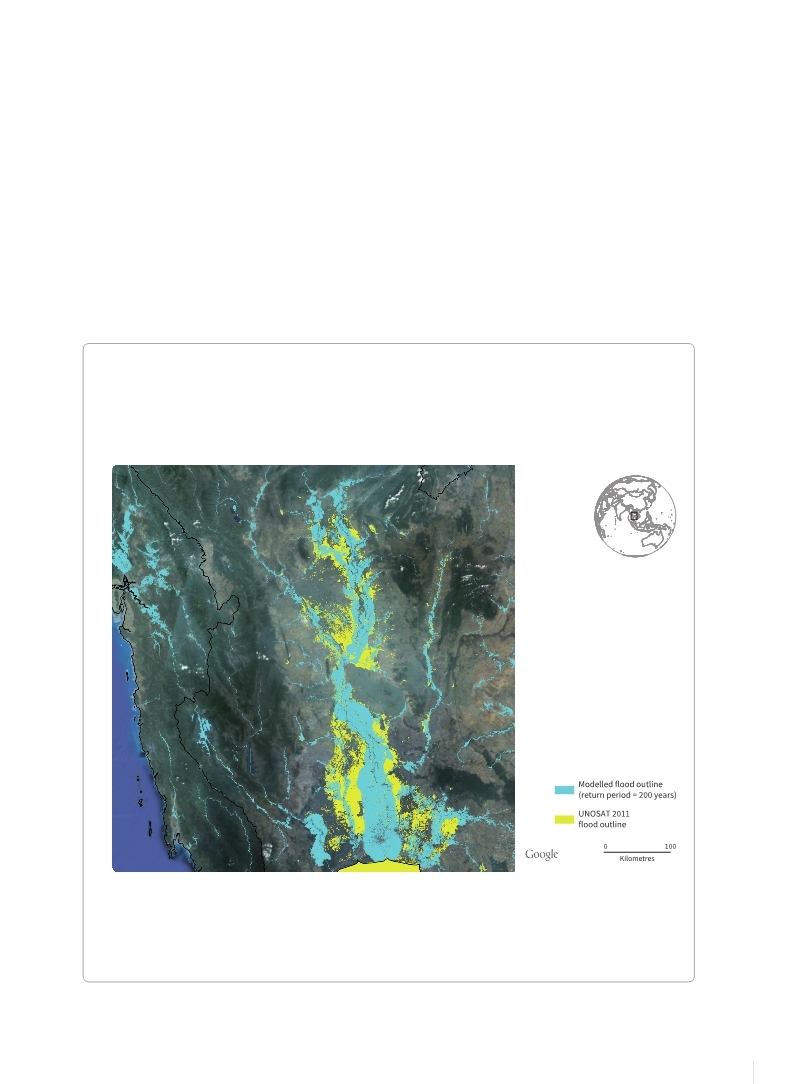
54
Part I - Chapter 3
However, the results are unlikely to be comparable with national or local AAL and PML estimates calculated with detailed hazard, exposure and vulnerability data or for specific portfolios of insured assets. This should not be considered a defect of the model. However much it is enhanced, a global model can never provide nor substitute for the detailed risk estimates required for designing national and local risk reduction investments or insurance schemes. However, the estimates provided
by the global model may encourage governments to develop the more specific risk models required to implement disaster risk reduction.
The development of the global model is iterative and the current release should be considered as a starting point. Between 2013 and 2015, the different hazard models, exposure proxy and vulnerability curves will be enhanced and further developed, taking into account peer review and the best available
(Source: UNISDR)
(Source: GAR global flood model; UNOSAT )
Box 3.1 Proof of concept for the GAR flood model
Figure 3.2 Flood hazard for Thailand compared with actual flood footprint of 2011
While river floods will not be included in the GAR risk model until 2015, a national level proof-of-concept study shows promising results. As Figure 3.2 shows, in Thailand, modelled results were compared with the outcomes of the Chao Phaya river floods of 2011.
The modelled results were largely coherent with the maximum flood depths of between 3 metres and 4 metres recorded in different sites upstream from Bangkok.
|


